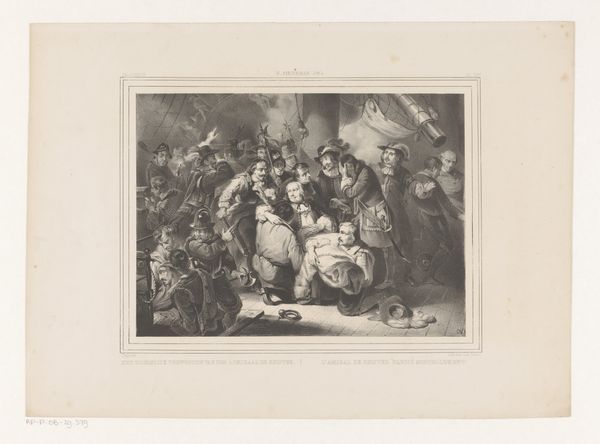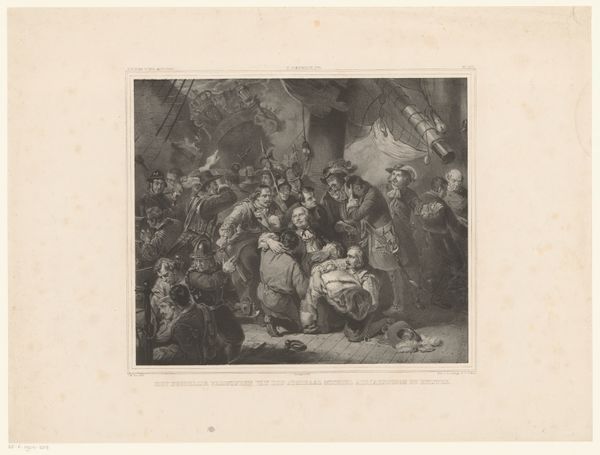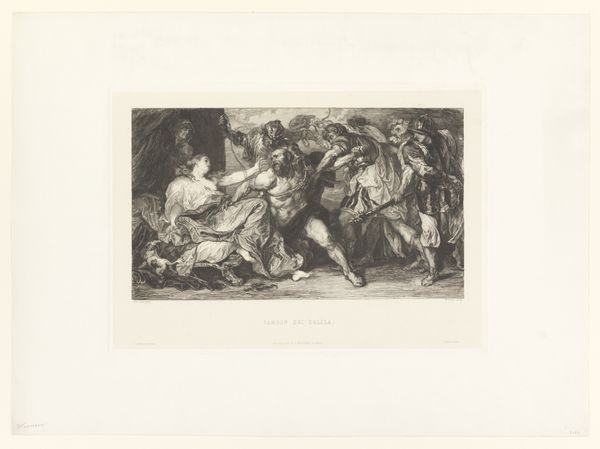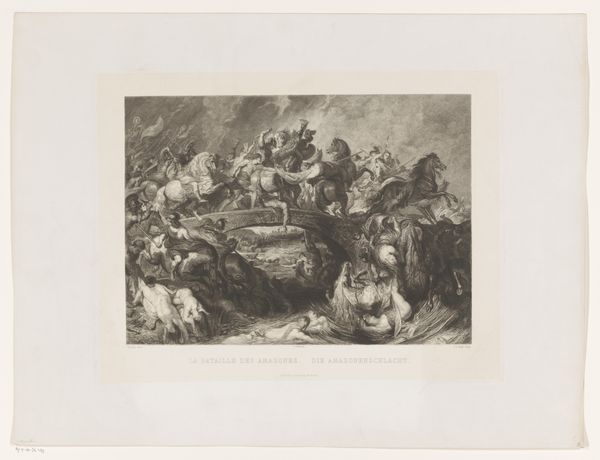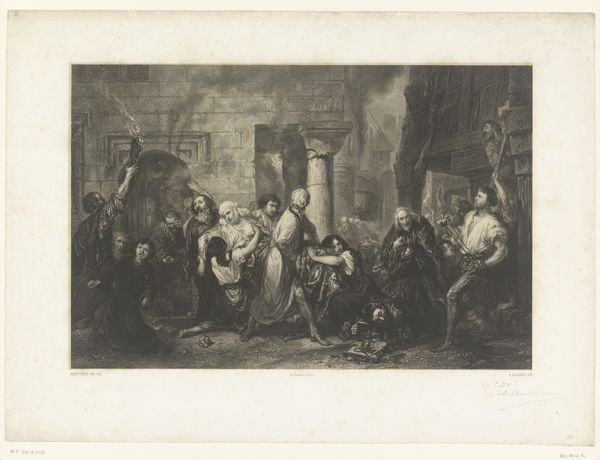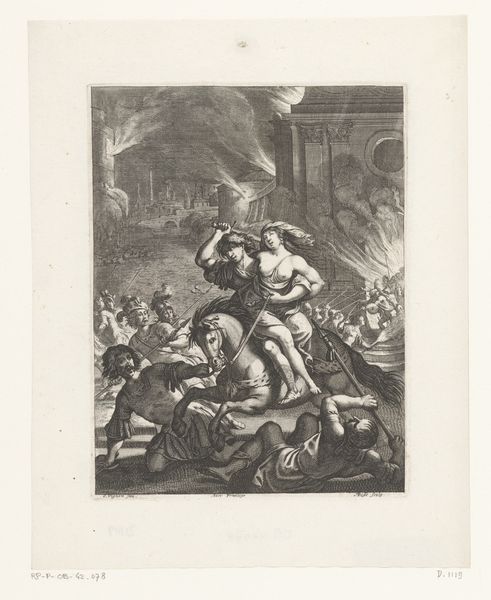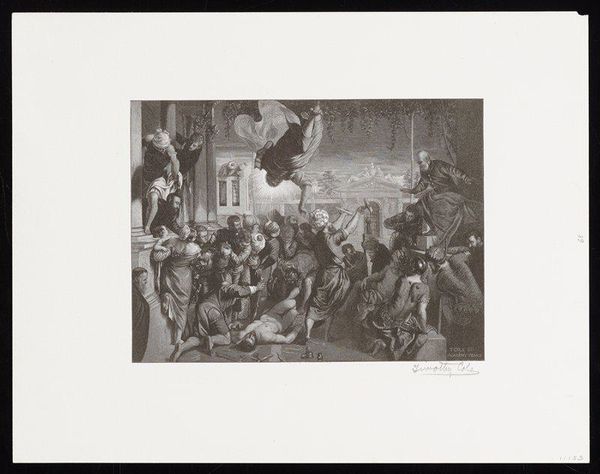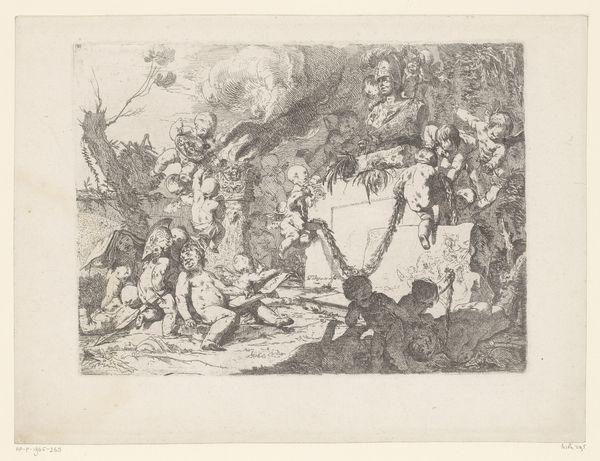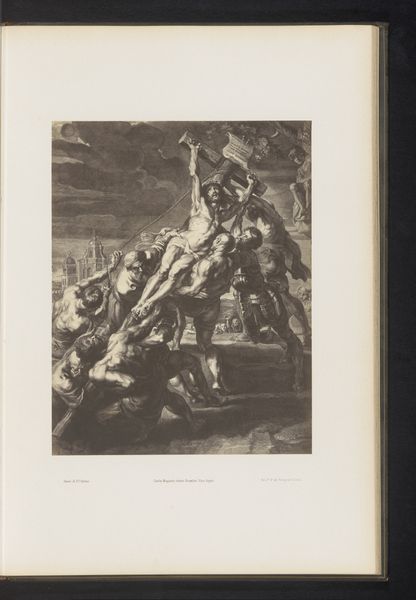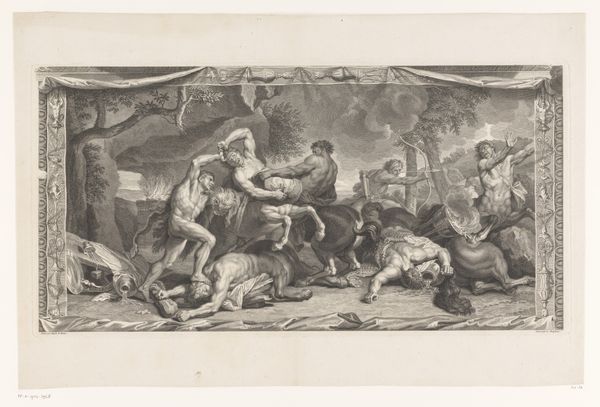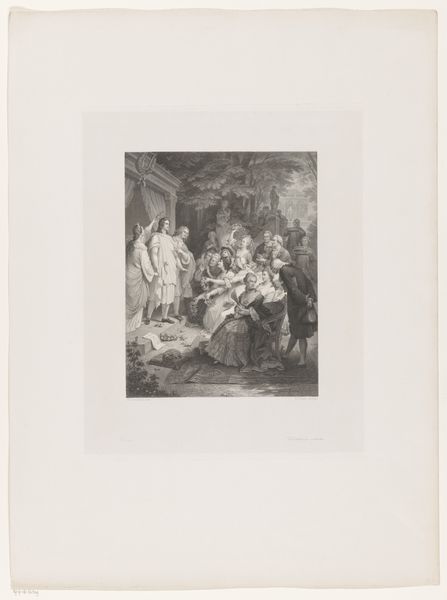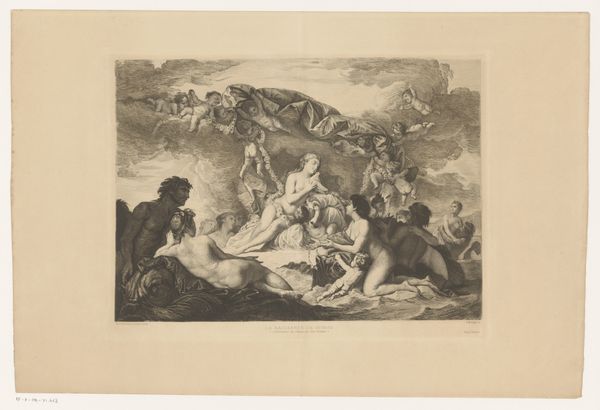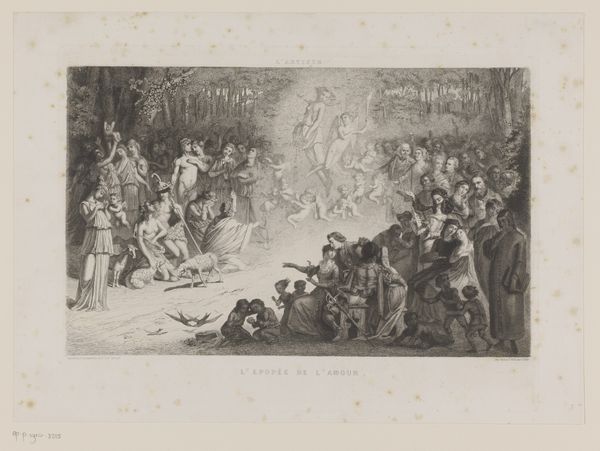
Admiraal Michiel de Ruyter raakt tijdens de zeeslag bij Agosta dodelijk gewond, 1676 1845
0:00
0:00
johannwilhelmikaiser
Rijksmuseum
Dimensions: height 360 mm, width 447 mm
Copyright: Rijks Museum: Open Domain
Editor: Here we have Johann Wilhelm Kaiser's 1845 print, "Admiral Michiel de Ruyter Mortally Wounded During the Sea Battle of Agosta, 1676." It's a very dramatic scene depicted through engraving and etching. I am struck by how it conveys chaos despite the stillness inherent in the medium. What aspects of the historical context shape your interpretation of this piece? Curator: It's a compelling piece, and you are right, the drama is palpable. The 19th-century creation date is key. While depicting a 17th-century event, it was produced during a period of intense nationalistic sentiment across Europe. So, we need to consider how Kaiser is constructing a particular image of Dutch heroism for a 19th-century audience. Is de Ruyter here merely a casualty of war, or does this image serve a greater political purpose, fostering pride in Dutch history and naval power during a time of political upheaval? Editor: So, it's not just about commemorating a historical event, but about building a national identity. That's really interesting. I hadn’t considered how the artist's own time period would influence his portrayal of the past. How does the piece tie into existing representations of De Ruyter and maritime power in Dutch art? Curator: Exactly. Think about the Dutch Golden Age and its emphasis on maritime power. De Ruyter was already a celebrated figure, a symbol of Dutch naval strength. Kaiser taps into this pre-existing iconography but filters it through a 19th-century lens, a period grappling with defining national identities and power on the world stage. This artwork becomes part of a longer visual narrative that reinforces national ideals. What are your thoughts? Editor: That clarifies so much! I was primarily looking at it as a snapshot of a historical event. Seeing it as part of a broader visual culture and a nation-building project gives it a completely different weight. Thank you. Curator: And thank you. Thinking about it as both art and political object deepens our appreciation.
Comments
No comments
Be the first to comment and join the conversation on the ultimate creative platform.
